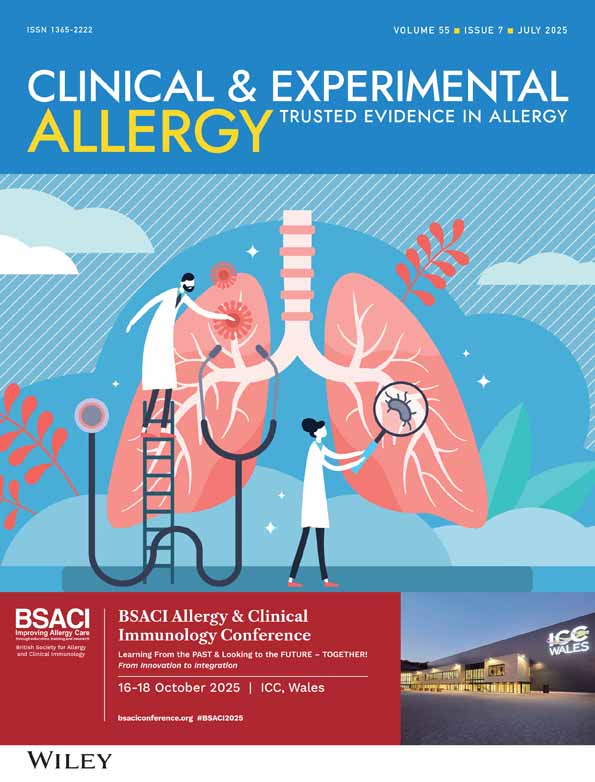Clinical characteristics of peanut allergy
Funding: United Kingdom Ministry of Agriculture. Fisheries and Food.
Summary
Background Current clinical advice regarding peanut allergy is based on small series of patients.
Objective To determine, in a large group of peanut allergic subjects, the patterns of clinical severity, symptom progression and availability and use of rescue medications.
Methods Questionnaire study of 622 self-reported allergic subjects
Results A total of 406 patients (66%) reported symptoms on contact with peanut. Only 121 (19%) had been knowingly exposed to peanut before the first documented reaction, implying a high frequency of occult sensitization. Severe symptoms were more common in adults. Abdominal symptoms were significantly associated with collapse. Fifty per cent reported reactions in the previous year. Only 82 (13%) had been admitted to hospital because of a reaction. Adrenaline was carried in some form by 65% though only 78 subjects (12.5%) had ever received injected adrenaline. Only 18/43 subjects (41%) who collapsed were given adrenaline. Skin-prick test weal size correlated weakly with severity but there were large overlaps between the groups. Peanut-specific IgE peaked in the teenage group, but did not correlate with severity.
Conclusions Peanut allergy is characterized by more severe symptoms than other food allergies and by high rates of symptoms on minimal contact. Skin-prick testing and peanut-specific IgE levels do not predict clinical severity. Avoidance of peanut is difficult. Many people suffering severe relations are inadequately treated. Sufferers need education and training in the use of rescue medication.




